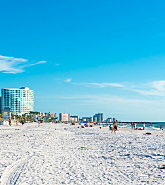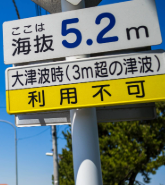Fires can start at all times and places, but how a fire spreads is principally down to the weather.
This week, 350 years ago, the fire at Thomas Farriner’s bakery on Pudding Lane, a small alleyway running down to the river from the City of London, broke out at the quietest time of the week, around 1am on Sunday morning September 2, 1666. London had been experiencing a drought and the thatched roofs of the houses were tinder dry. At 4 am the Lord Mayor, roused from his sleep, decided the blaze was easily manageable. It was already too late, however. By 7am the roofs of some 300 houses were burning and fanned by strong easterly winds the fire was spreading fast towards the west. Within three days the fire had consumed 13,000 houses and left 70,000 homeless.
In the city’s reconstruction only brick and tiles houses were permitted, severely reducing the potential for repeat conflagrations. Within a few years there were the first fire insurers, growing their business as fear outran the risk.
Yet big city fires had by no means gone away and the wooden cities of northern Europe were primed to burn. The 1728 Copenhagen fire destroyed 28% of the city while the 1795 fire left 6000 homeless. A quarter of the city of Helsinki burned down in November 1808. The 1842 fire that destroyed Hamburg left 20,000 homeless. The center of the city of Bergen Norway burnt down in 1855 and then again in January 1916.
Wind and fire
By the start of the 20th Century, improvements in fire-fighting had reduced the chance that a great city fire took hold, but not if there were strong winds, like the 1916 Bergen, Norway fire, which broke out in the middle of an intense windstorm with hurricane force gusts. In February 1941 the fire that burnt out the historic center of Santander on the coast of northern Spain was driven by an intense windstorm: equivalent to the 1987 October storm in the U.K. And then there is the firestorm that destroyed Yokohama and Tokyo after the 1923 earthquake, driven by 50 miles per hour winds on the outer edge of a typhoon in which, over a few hours, an estimated 140,000 died.
Wind and fire in the wooden city are a deadly combination. Above a certain wind speed, the fire becomes an uncontrollable firestorm. The 1991 Oakland Hills fire flared up late morning also on a Sunday and then surged out of the mountains into the city, driven by hot dry 60 miles per hour Diablo Winds from the east, jumping an 8 lane highway and overwhelming the ability of the fire crews to hold the line, until the wind eventually turned and the fire blew back over its own embers. The fire consumed 2800 houses, spreading so fast that 25 died. On February 7, 2009 a strong northwesterly wind drew baking air out of Australia’s interior and fires took off across the state of Victoria. Fallen power cables sparked a fire whose embers, blown by 60 miles per hour winds, flashed from one woodland to another, overwhelming several small towns so fast that 173 died before they could escape.
Most recently we have seen fire storms in Canada. Again there is nothing new about the phenomenon; the Matheson fires in 1919 destroyed 49 Ontario towns and killed 244 people in a fire front that extended 60km wide. It was a firestorm fanned by gale force winds, that destroyed one third of the city of Slave Lake, Alberta, in 2011 and it is fortunate only that the roads were broad and straight to allow people to escape the fires that raged into Fort McMurray in summer 2016.
There is no remedy for a firestorm blown on gale-force winds. And wooden property close to drought ridden forests are at very high risk, such as those from South Lake Tahoe to Berkeley in California and in New Zealand, from Canberra to Christchurch. Which is why urban fire needs to stay on the agenda of catastrophe risk management. A wind driven conflagration can blow deep into any timber city, and insurers need to manage their exposure concentrations.






